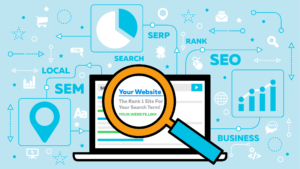Core web vitals have long become a search engine vital signal and Google uses it to judge website quality. This means that although Google recognises and grades supremacy of content quality they also consider SEO as important too.
Core web vitals explores user experience on your website. They evaluate how your website responds to users problems, their satisfaction, speed of interaction and navigation through your website. Core web vitals can also help the SEO of your website. If your website has a good score It may likely earn a badge from Google. Pearland SEO can run a quick test to check your website core vitals by using tools such as GTmetrix or Google console.
7 Ways to Improve Your Core Web Vitals
Google is focused on providing quality contents and experience for every user. This is why it ranks up websites with great core web vitals. Pearland SEO experts has highlighted seven ways to improve yours;
Lazy Loading:
Lazy loading is a programming tool mostly used in Web design to reduce the loading or initialization of objects or images till the exact point when it is needed.
If your website has many images included in the midst of its contents, Houston SEO knows it is best to include Lazy loading as this allows your images to load at the exact time the user scrolls down your contents. This does not compromise the loading speed. Lazy Loadings is very beneficial to your website and can improve its performance and SEO, reduce loading time, optimize data usage and also gives the users longer stay on your page.
Reduce JavaScript Execution
To see if your website has unused JavaScript go to the website, right click on the mouse and choose ‘Inspect’, click ‘Sources’ and look for three dots on the bottom. You should add a tool coverage and after that you press the load function. After all this you can now see how much JavaScript is not being used in your Web page. Always try to cut down on unused JavaScript and one way of doing it is by ‘Code splitting’. That is the process of turning one JavaScript bundle into smaller sized JavaScript bundles.
Decrease Your Third Party Plugins
There are some third party plugging that may be interfering into your metric, some of them include pixel, Facebook manager. These plugins are important but some may cause interference and slow down your page. You have to remove the ones that are not so important to your website. Some of the factors that cause plugging to interfere is because you are using an older version. Try upgrading to a newer version, this may likely speed up your page loading time.
Improve Your Server Response Time
Server Response time measures how long it takes to load the HTML of your page to the server. There may be variables in this metric depending on your network and such variables are not expected to be large. There are certain factors that lead to this and they include slow applications logic, slow routing, memory starvation and slow database queries.
A faster server response time improves your page load metric. Long server Response time has severe detriments to your SEO and user experience. Google has suggested a server Response time lower than 600 milliseconds.
Decrease the File size of all your Images
Ensure that all images on your website are adjusted, compressed and with a proper dimension. On occasions where the images may be too large for your web it would definitely hurt your metric and will reduce the user experience. The images should be below 100kb.
Eliminating Sudden shift In Content
You do not want your users clicking the wrong content when a sudden shift in content occurs. Cumulative layout shifts (CLS) says that users usually experience sudden shifts in content and that tends to make them distracted and frustrated. This occurs when another element is added to the page and the current element is required to change or move. This is caused by several factors such as Ads, dynamically injected contents, Web fonts or embeds. A number of tools can help to remove this shift in content and they are Lighthouse 6.0.
Implement a Caching Solution
A cache is a storage layer that stores a type of data so that on future requests of that data it will be served up faster than possible. Cache does this by accessing the data primary storage location. This tool stores the static HTML version of your pages eliminating the need for them to be loaded up again for new users when they visit your website. Cache is beneficial because it improves applications performance, reduces the load on your database to prevent slow performance, can provide up to thousands of IOPS and replace a lot of database instances. The WP fastest cache is a software that can help you achieve that.
Conclusion
It is necessary to optimize your website for these core web vitals as it has a way to harm your search engine ranking and even your individual experiences on the website if it is not done. You should also note that your website needs to be mobile friendly and secured against unwanted intrusion.






